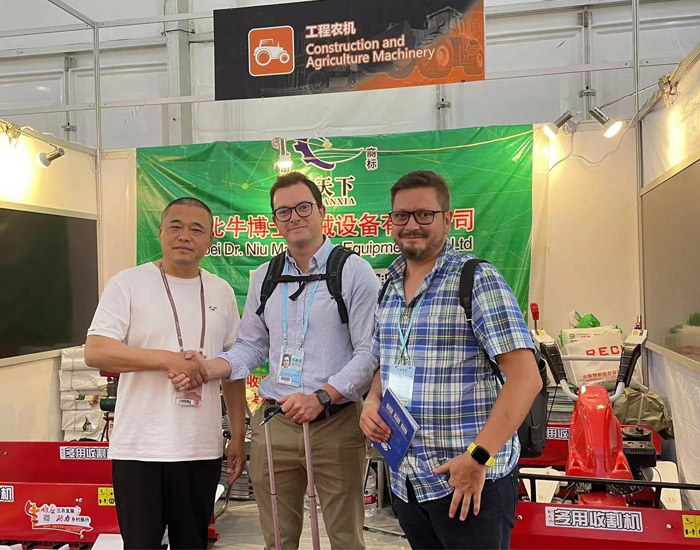Combining Wheat Cutting and Binding Machinery for Efficient Harvesting Solutions
Wheat Cutter and Binder Machines Revolutionizing Agriculture
In the realm of agricultural machinery, the wheat cutter and binder machine stands out as a vital innovation that has transformed the efficiency of wheat harvesting. As the global demand for wheat rises, driven by its importance as a staple food, the need for effective and efficient harvesting equipment has never been more important. This article delves into the significance, functionality, and evolution of wheat cutter and binder machines, highlighting their role in modern agriculture.
Historical Context
The harvesting of wheat has undergone significant changes over the centuries. Traditionally, wheat was harvested by hand using sickles, a labor-intensive process that required considerable manpower and time. As agricultural practices evolved, so did the technology used in harvesting. The introduction of mechanical harvesters in the 19th century marked a turning point in wheat production. Among these innovations, the wheat cutter and binder machine emerged as a pivotal tool, marrying cutting efficiency with the ability to bind harvested crops, ultimately streamlining the entire process.
Functionality and Design
Wheat cutter and binder machines are designed to efficiently harvest wheat crops by cutting the stalks at their base and bundling them into manageable sheaves. The core components of these machines include
1. Cutting Mechanism The cutting mechanism typically consists of sharp blades or sickles that slice through the wheat stalks with precision. Modern machines utilize rotary cutters that ensure a clean cut, reducing crop loss and damage.
2. Binding Mechanism After cutting, the wheat is gathered and bound into sheaves. The binding mechanism usually employs twine or wire to secure the bundles. This not only facilitates easier transportation but also prepares the wheat for drying and further processing.
3. Feeding System A well-designed feeding system ensures that the wheat stalks are fed into the cutting mechanism smoothly, enhancing the efficiency of the machine. This is often achieved through a series of rollers that control the flow of crops into the machine.
wheat cutter and binder machine

Benefits of Wheat Cutter and Binder Machines
The use of wheat cutter and binder machines brings numerous advantages to farmers and the agricultural sector as a whole
- Increased Efficiency These machines can harvest vast areas of wheat in a fraction of the time it would take human laborers. This efficiency is crucial during the harvest season when timely gathering of crops can significantly impact yield quality and quantity.
- Reduced Labor Costs By mechanizing the harvesting process, farmers can reduce their labor costs significantly. Fewer workers are required to operate machinery compared to manually harvesting crops, allowing farmers to allocate their resources more strategically.
- Improved Crop Quality The precision cutting and binding offered by these machines minimize damage to the grains, ensuring higher quality produce. This is particularly important for maintaining the market value of wheat.
- Sustainability Mechanized harvesting helps in reducing wastage and promoting sustainable agricultural practices. By efficiently cutting and bundling the crops, less wheat is left to rot in the fields.
The Future of Wheat Harvesting
As technology continues to advance, the future of wheat cutter and binder machines looks promising. Innovations such as automation, improved algorithms for crop analysis, and the integration of IoT technology may further enhance the capabilities of these machines. Farmers are increasingly relying on data-driven insights to make informed decisions regarding their crops, and the machinery they use is also evolving to meet these new demands.
Conclusion
The wheat cutter and binder machine has undeniably revolutionized the way wheat is harvested, providing a perfect blend of efficiency, cost-effectiveness, and improved crop quality. As the agricultural landscape continues to evolve with technology, these machines will play an essential role in ensuring that the growing demands for food production are met sustainably and effectively. By embracing innovation, the agricultural sector can look forward to a future where harvesting is not just efficient but also contributes to a more secure food supply for a growing global population.
Latest news
-
When to Upgrade Your Old Forage HarvesterNewsJun.05,2025
-
One Forage Harvester for All Your NeedsNewsJun.05,2025
-
Mastering the Grass Reaper MachineNewsJun.05,2025
-
How Small Farms Make Full Use of Wheat ReaperNewsJun.05,2025
-
Harvesting Wheat the Easy Way: Use a Mini Tractor ReaperNewsJun.05,2025
-
Growing Demand for the Mini Tractor Reaper in AsiaNewsJun.05,2025







